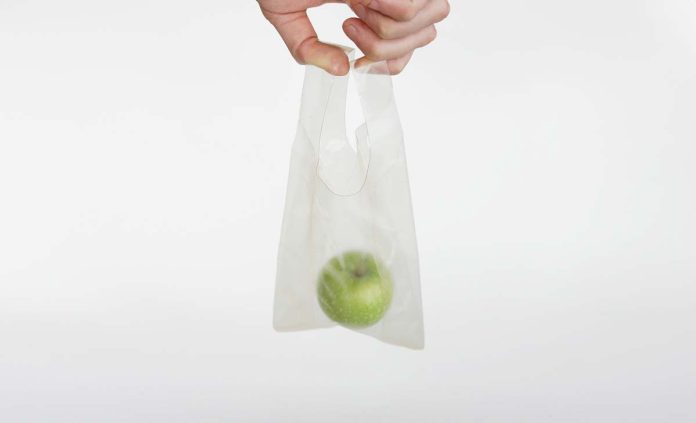How can we define sustainability? In recent years this term has become a part of everyday life, in all its possible aspects, and in many cases it has been abused, in the process of so-called “greenwashing.” Often, however, we take it for granted that we are talking about simple practices connected with products (for example recycling, the selection of new materials, repair and reuse of components, etc.), but that is not the case: we are talking, in fact, about a true overall approach that attempts to respond to many critical aspects connected with extraction of raw materials, transport, consumption and processing of resources, but also the spaces in which we live and the way we produce things.
When we speak of sustainable design these terms become a true viewpoint for the design system and its methods – not only in this sector, but also with repercussions for the entire manufacturing industry: raw materials have to be obtained in a responsible way, considering not only their availability but also the energy consumed for their transport and shaping, the safeguarding of the natural environment and the conditions of the workers involved. A sustainable product is made of a few different materials, assembled with non-toxic solutions that are easy to dismantle, repair or reutilize part by part, thanks to a specific life cycle and precise instructions for the recycling of the various substances. From the standpoint of production, brands have to monitor their processes, encouraging solutions to diminish energy impact and waste. The growth of a business has to take the availability of resources into account, as well as the accessibility of the product, to boost its positive impact. These are just some of the factors connected to sustainability, and fortunately many brands are already working in this direction, offering innovative solutions. Because the future is being constructed today.
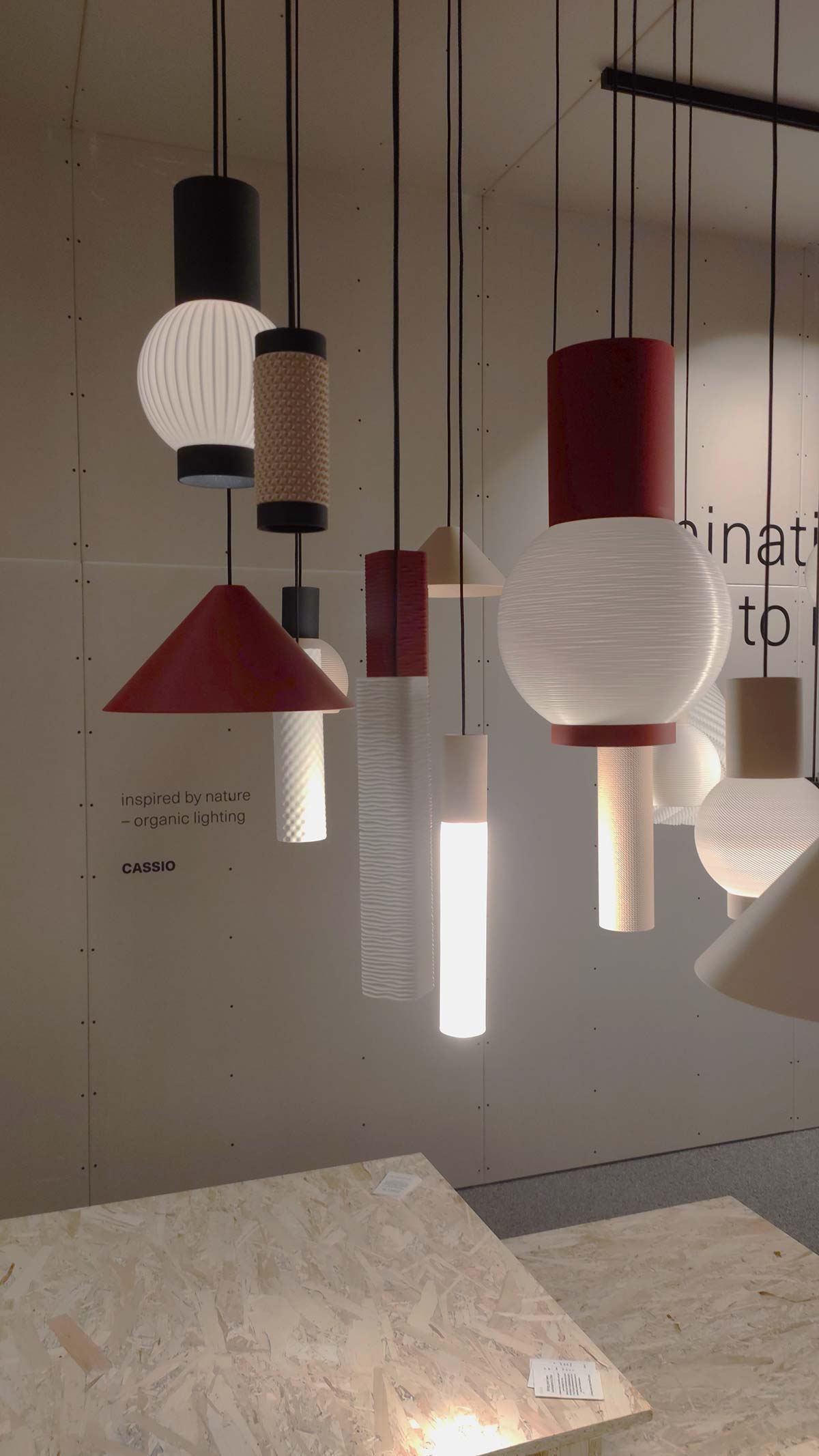
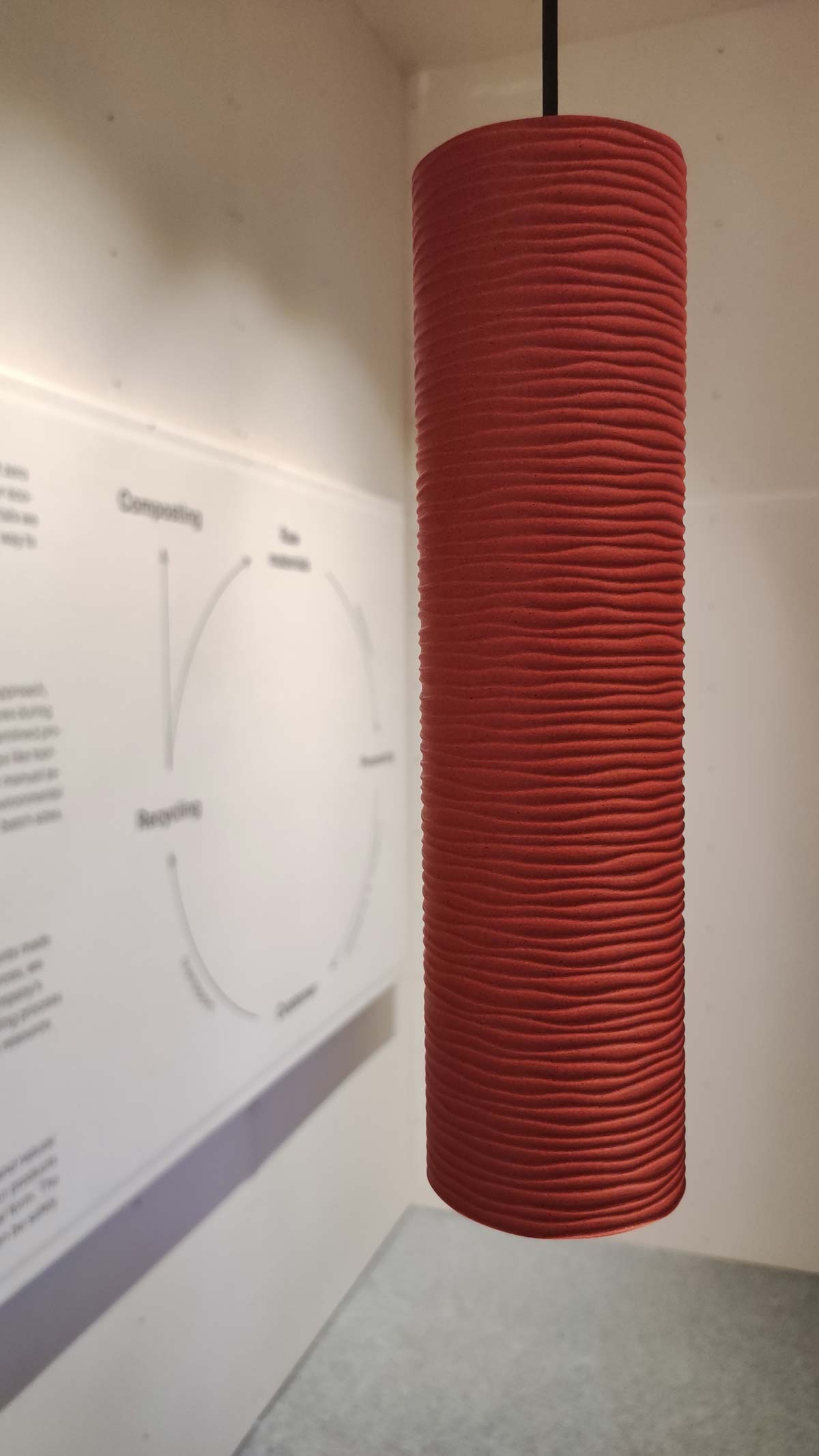
Carbon zero manufacturing
IQ LUX is a brand of lighting products that is part of the XAL group who since 2023 have been working towards achieving manufacturing with zero CO2 emissions through various solutions: recycled materials, additive production technology and renewable energy for creating products that emphasise circularity. Specifically, IQ LUX have developed proprietary 3D printed filaments made from recycled plastics (PET) or biological sources (PLA) that use mixes of salvaged materials such as wood, cement, graphite, ceramic, algae and earth – useful also for creating colours, patterns and unique characteristics for each product. The company creates their own designs using 3D printing and all activities are powered exclusively by solar energy, achieving neutral carbon emissions.

Sustainable workplace
The headquarters of the company Gessi is located within the park of the same name, in Valsesia. In an area extending over 800,000 m2, four hectares have been given over to photovoltaic installations, one of the most innovative and advanced systems of “energy-generating roofs” in Italy, producing 18% of the total required. This system, together with other energy sources (solar, hydroelectric and thermal) ensures that 100% of the electricity used by the company is produced by renewable sources. Over four years, from 2018 to 2021, around 10000 tonnes of CO2 have been saved. Parco Gessi has been created to be inclusive not only for the employees, who can move between different departments thanks to a cycle route, but also for the benefit of the natural surroundings and houses twenty hives that are home to over 600,000 bees.

Reusing production waste
Brokisglass demonstrate how production waste can become a new resource: the company was in fact created to reuse leftover material from the production of glass products by the brand Brokis and Janštejn Glassworks. The technique of hand blowing in fact creates up to 30% of waste material for each piece and the Janštejn Glass Group (that the brands mentioned are part of) have therefore decided to invest their own resources into creating a unique new material, based on the use of glass fragments. The Brokisglass panels that have emerged from this solution offer a new aesthetic with a material with unique properties, perfect for architecture, building, interior design and furniture. The brand reuses 100% of the waste (around 10 tonnes a week) and thanks to its composition, offers a product that is unique in terms of texture and colours.
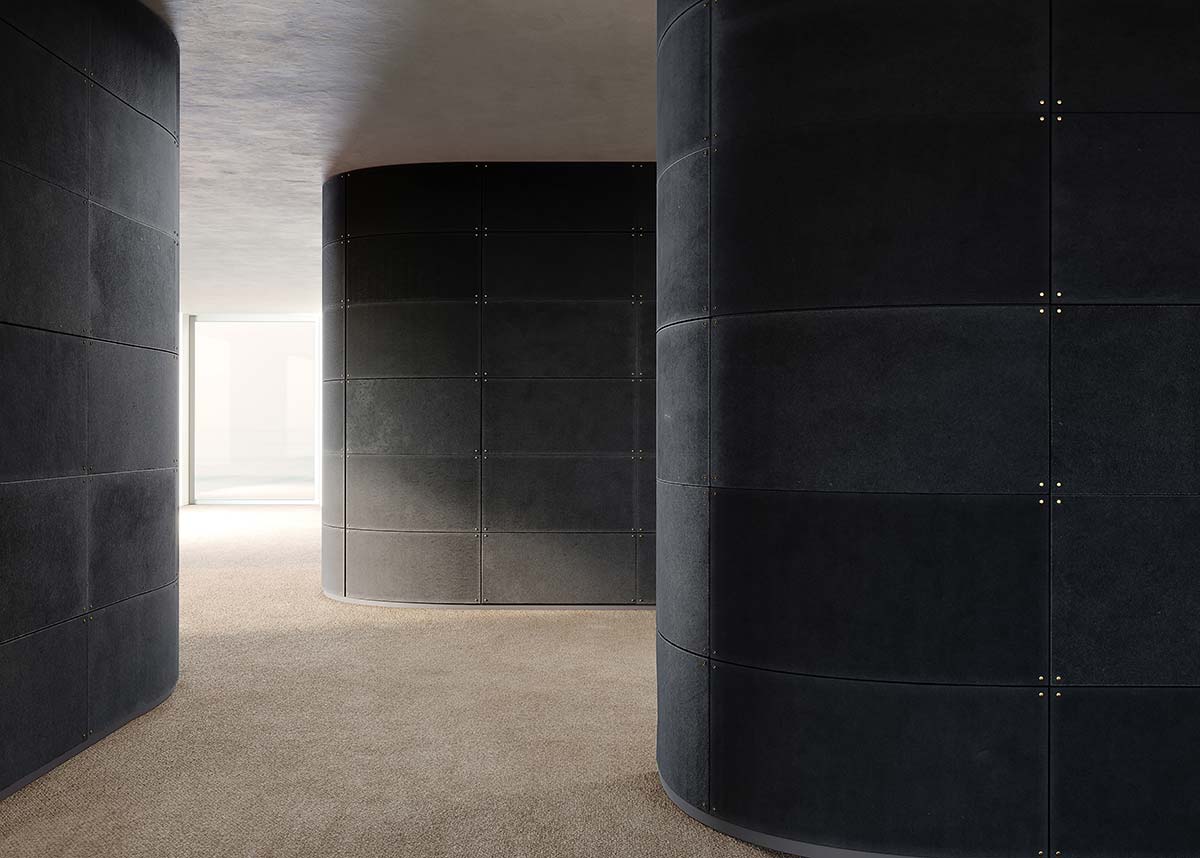
Sustainable growth for business
The company Honext produce carbon-negative recyclable panels – in other words they eliminate more CO2 than they produce during their life cycle. Made from 100% waste fibres from the paper industry, the product has recently been awarded a Cradle to Cradle Gold certificate that analyses the healthiness of materials, circularity of the product, protection of air quality and climate, responsible management of land and water and social equity. To encourage sustainable growth, Honext wants to operate reducing transport and encouraging self-sufficiency in areas where there is a problem industrial fibre waste. At the moment the brand is focussing on scalability of production in Europe that thanks to shared rules and regulations, can ensure greater control in terms of standards and the implementation of truly sustainable practices.
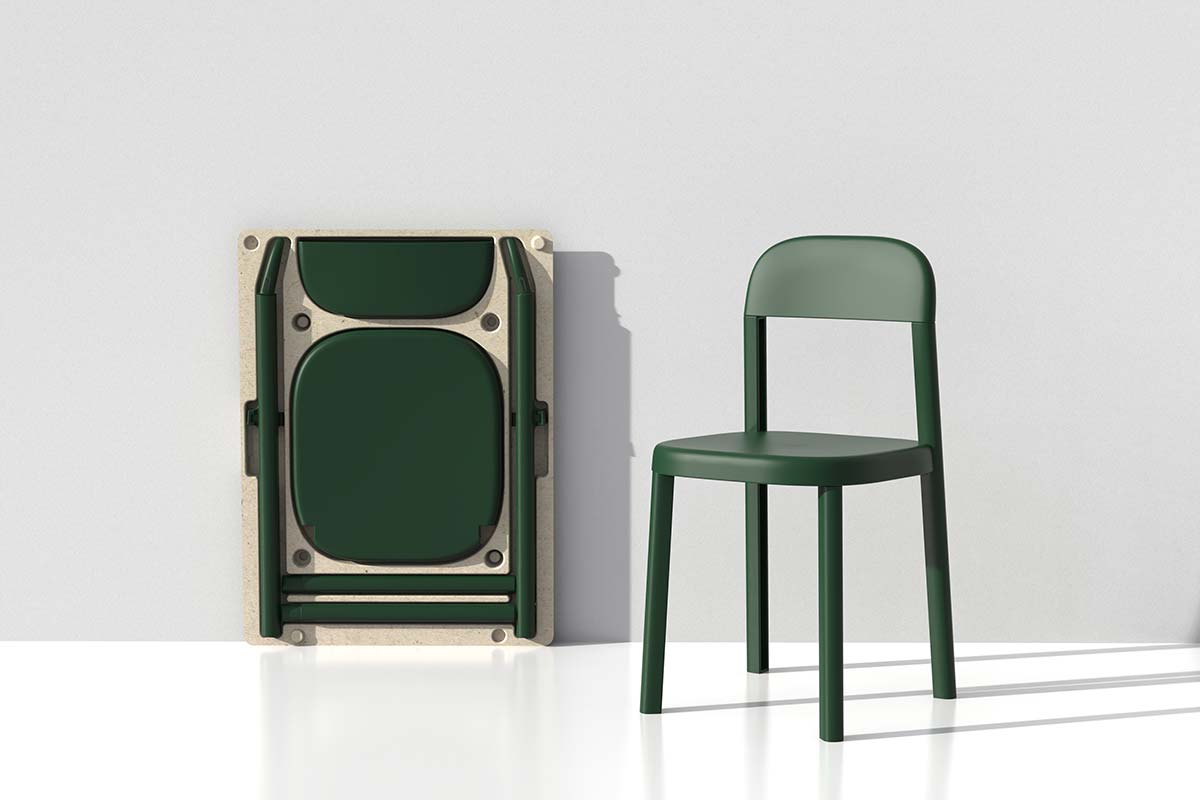
Optimisation of production and packaging
OTO Chair, designed by Alessandro Stabile and the studio Martinelli Venezia, is the first product from One to One and demonstrates a fresh approach to the design of this product type. The brand, in collaboration with the designers, has come up with a solution to reduce the dimensions of the conventional mould – all the components are moulded with a single matrix – speeding up the production process and reducing material waste to a minimum. The chair is made from a single material, created with post-industrial recycled plastic and shipped in recycled and recyclable cellulose pulp packaging. OTO Chair is sold disassembled and is easy for the customer to put together: this process introduces the concept of the hyper-serial, in which some of the standard operations are omitted – like assembly – leaving the final buyer to complete the process.
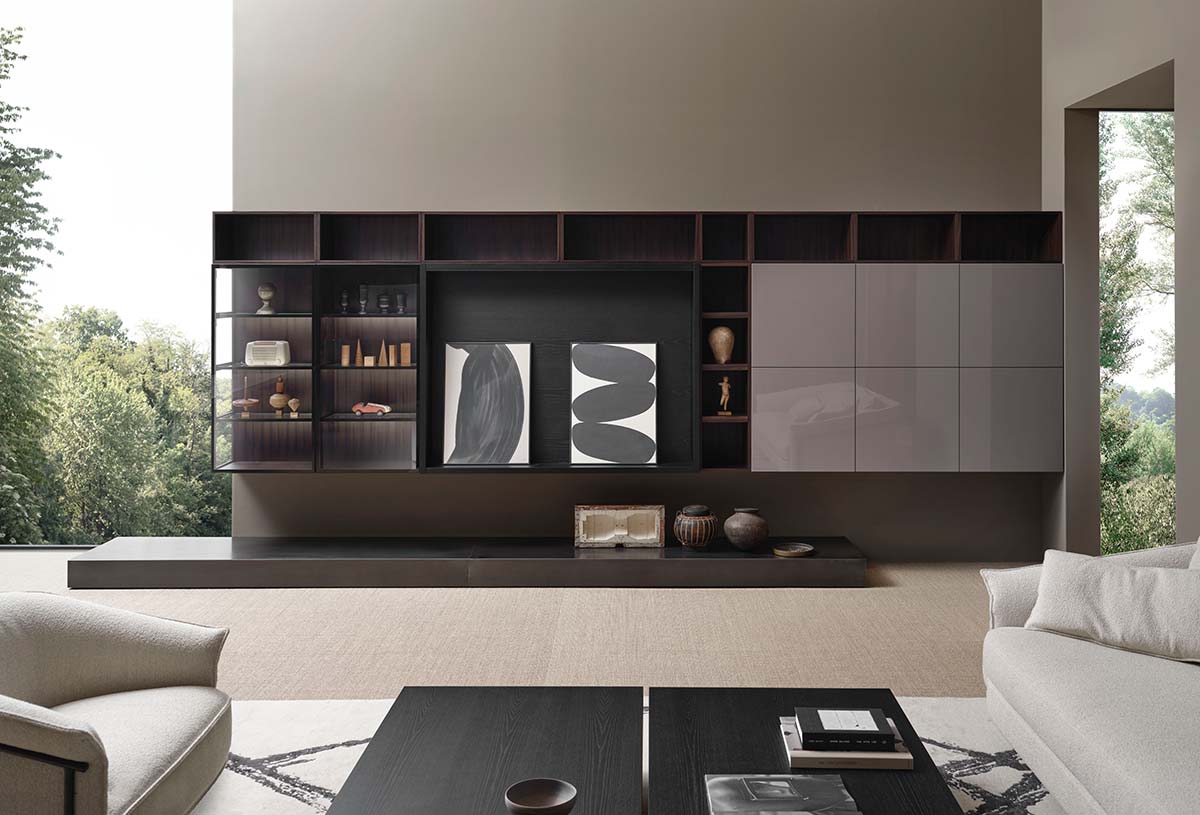
Production on demand
The brand Porro, thanks to investments to support legislation on the evolution towards industry 4.0 and the technological innovation of manufacturing processes, have developed a new state-of-the-art system that has made it possible to substitute the creation of panels in standard sizes with a form of production known as “just in time”, based on orders, without forgetting customisation, quality and sustainability. For this reason, some phases of the production are still done manually such as selection, combination and treatment of the veneers to achieve the best continuous surfaces. Thanks to an approach geared towards continuous improvement and manufacturing efficiency, Porro have rationalised lead times, use of materials and energy throughout the entire manufacturing phases.

Controlled supply chain for low environmental impact
Not just products but also suppliers, land and social responsibility: Slide takes Made in Italy seriously to ensure supply of quality and sustainability, both in terms of raw materials and for professional services that allow the company to work correctly and at the speed required by the market today. The company is conscientious about the territory where it operates: specifically, 80% of the suppliers are located in Italy, and of these 75% in Lombardy. In terms of distribution value, 88% is destined to the Italian supply chain while 66% to Lombardy. As well as a controlled supply chain, Slide therefore guarantees transport of materials with low environmental impact and the value it redistributes remains for the most part in the surrounding area, which is also where most of the employees come from.
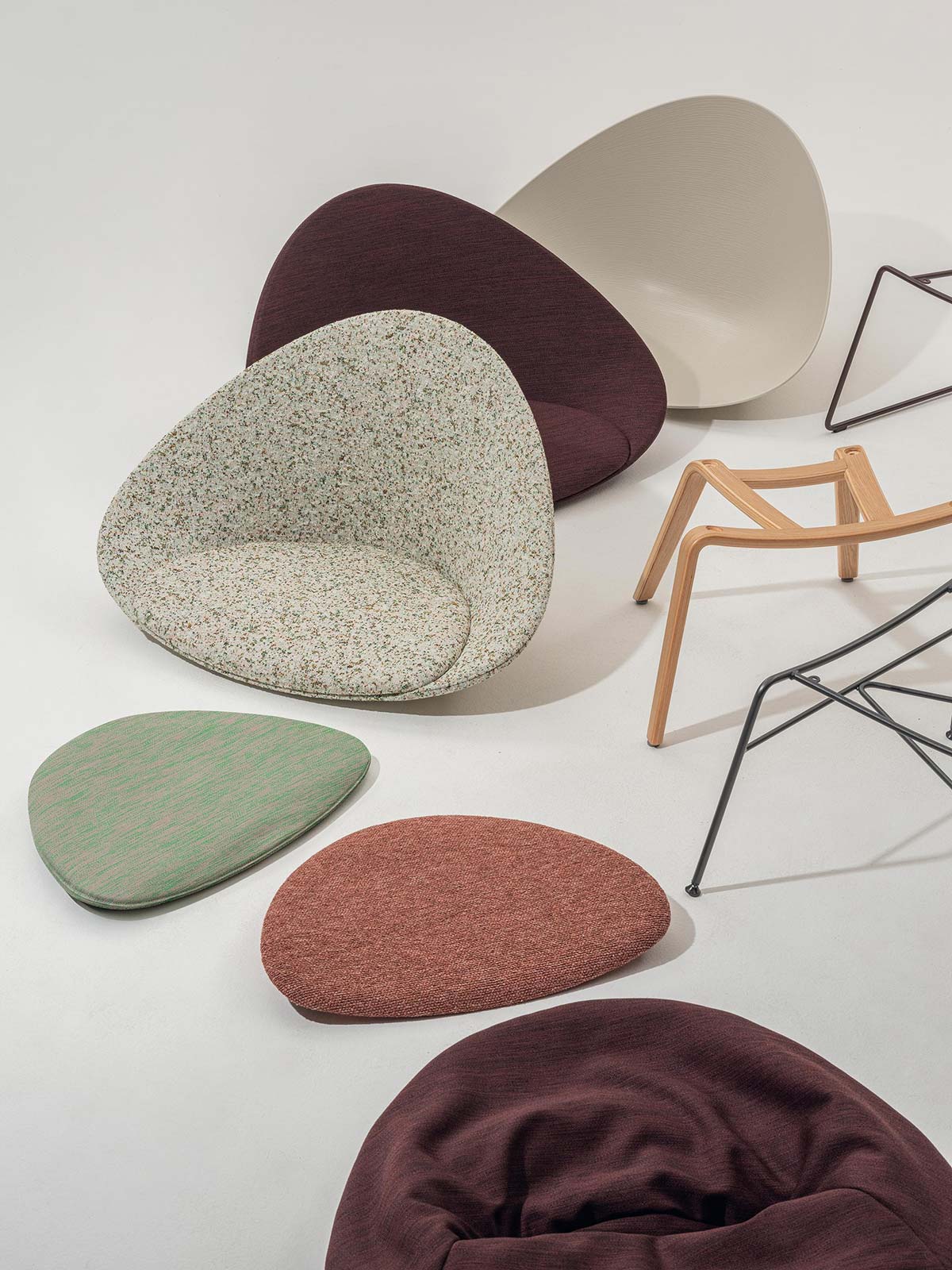
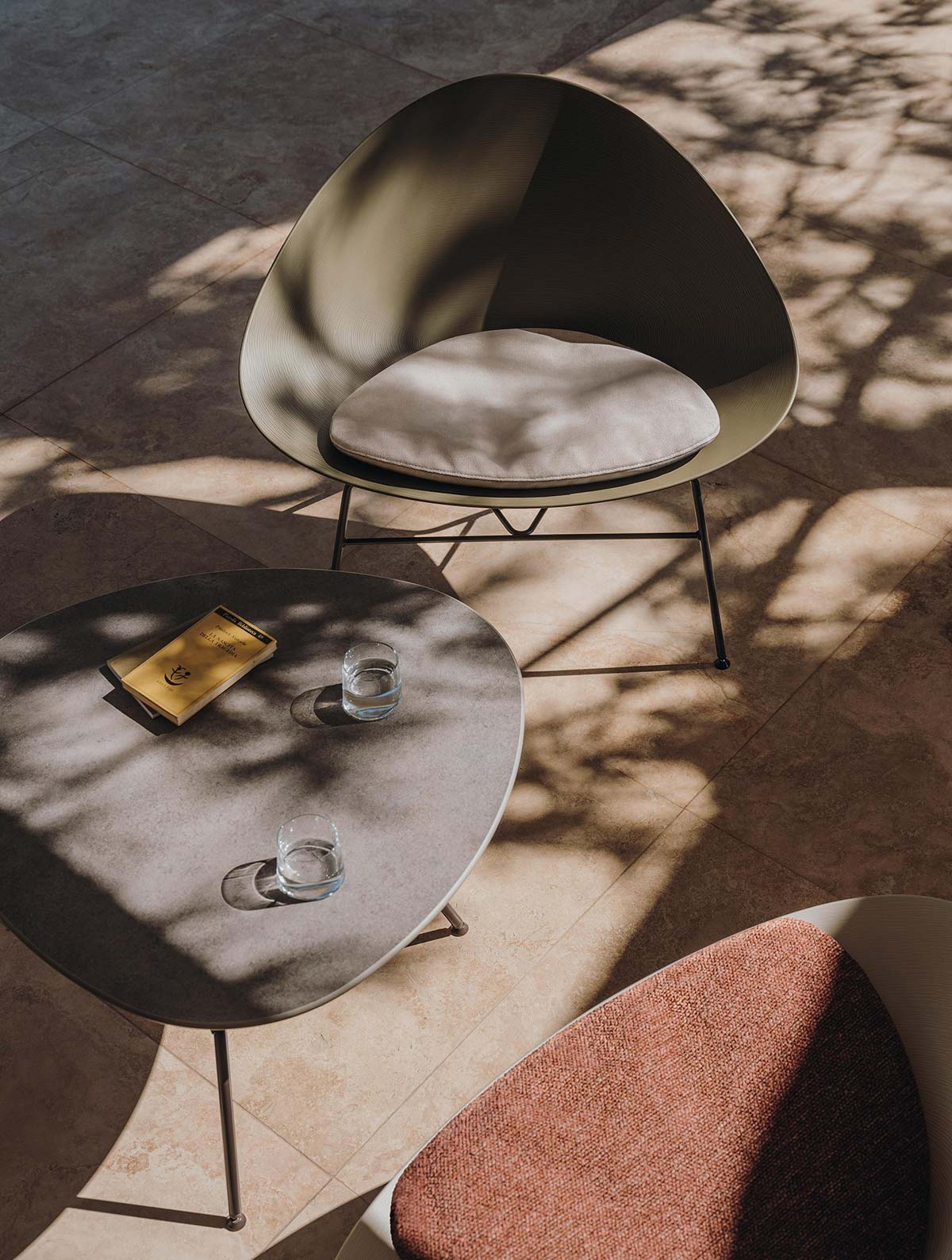
Sustainable industrial design products
Can mass production become sustainable? A definitive answer does not yet exist but through new products and small changes we can imagine a more responsible design sector. Such is the case with Arper: Mixu, designed by Gensler in 2012, is a versatile chair that via a system of three distinct parts (seat, backrest and base) can provide endless solutions. Specifically, the chair is made from recycled post-industrial plastic, FSC certified wood, finishes in fabric or leather. Adell, designed by Lievore + Altherr Désile Park (2020), has a shell in 80% recycled polypropylene while Kata (Altherr Désile Park, 2021) uses a polyester fibre made from post-consumer recycled plastic bottles (to produce a kilo of yarn around a kilo of waste is used – the equivalent of 48 half-litre bottles). The three solutions are produced without the use of glues and are easy to disassemble for disposing of responsibly.
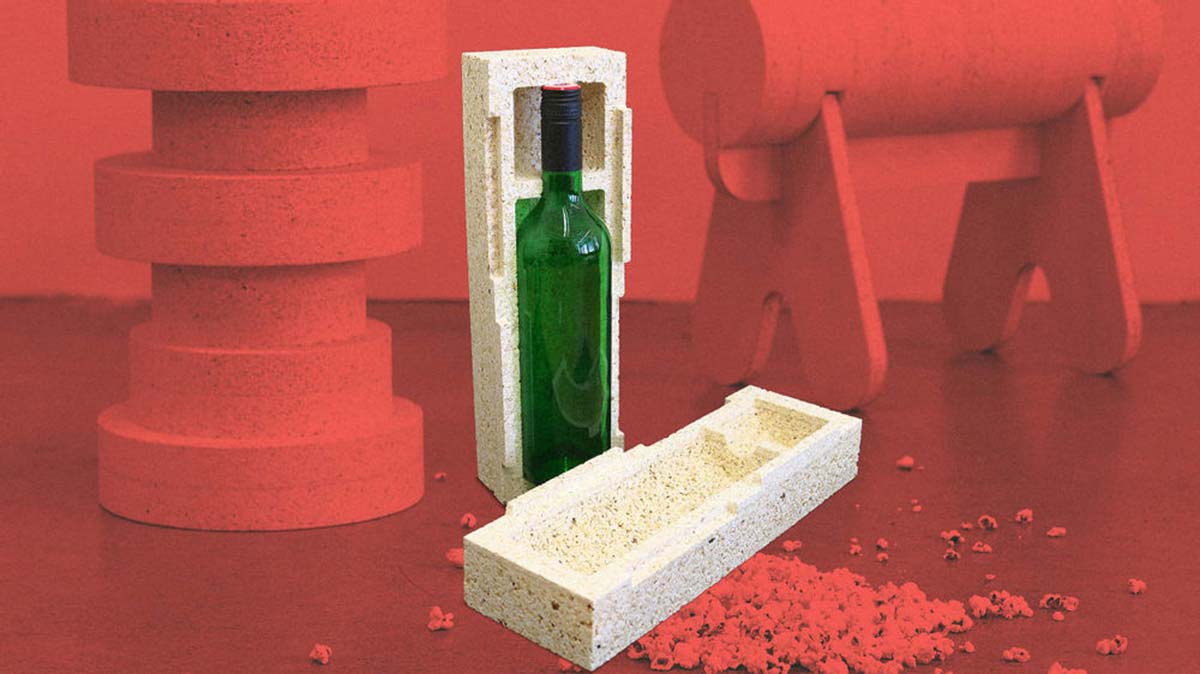
Popcorn packaging
Would you ever have thought, while munching on popcorn in the cinema, that one day those balls of corn would be transformed into a packaging material? The idea, only seemingly bizarre, occurred to professor Alireza Kharazipour, head of the research group in Chemistry and Engineering of composite materials at the Faculty of Forestry Sciences at the University of Göttingen, in Germany. Thanks to many years of experience in the field of renewable energy and raw materials, Kharazipour has succeeded in developing a material made from popcorn grains that can completely replace polystyrene materials, even those made from expanded foam. The granules can offer a 100% organic and ecological alternative to polystyrene based products currently used in industry, in packaging, acoustic insulation panels, door panels and booster cushions.
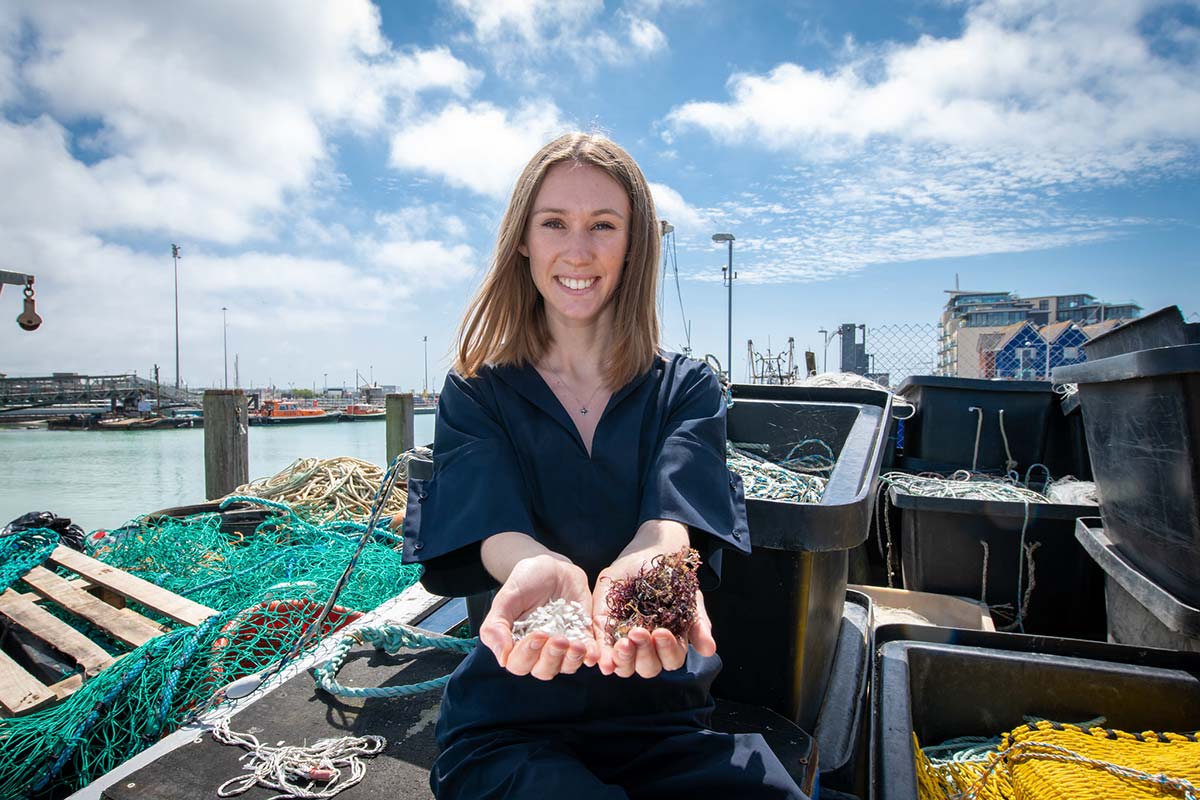
Organic plastic from the sea
Stronger than polyethylene but completely biodegradable, made from red algae and fish waste, a plastic has quite literally been invented by Lucy Hughes a British designer aged just 27 years who while still a student at the University of Sussex threw herself headlong into the search for a material to replace the plastic in use. “When I read that in 2050 there will be more plastic than fish in the oceans, solving this problem became my priority,” she said. The product created by Hughes – patented under the name of MarinaTex – is a strong, translucent and flexible bioplastic that can replace single-use plastic packaging and can be disposed of with food waste, thus creating a perfect circular system. From the skin of a single cod it is possible to create up to 1400 bags of MarinaTex. “Designers have a fundamental role in shaping the world of the future” says Hughes with conviction.

3D printing for recycling and reducing waste
“A series of products created by our designers and made from post-consumer recycled material, for beautiful, durable, sustainable objects made with innovative technologies and craftsmanship”: this is the promise of r3direct, a Tuscan company based in Lucca and a pioneer in the field of large-format 3D printing that is made based on refuse and waste materials. Their designs have been made for public services, like anti-terrorism barriers and benches, but also for private individuals and professionals, in art, architecture and design. Two years ago for example, r3direct worked with architect Mario Cucinella to build the installation Design with Nature at the Milan Furniture Fair. And that’s not all: “In the future you will be able to print anywhere, without the need for transport or warehousing” says the group’s designer Stefano Giovacchini, “thereby also reducing pollution”.
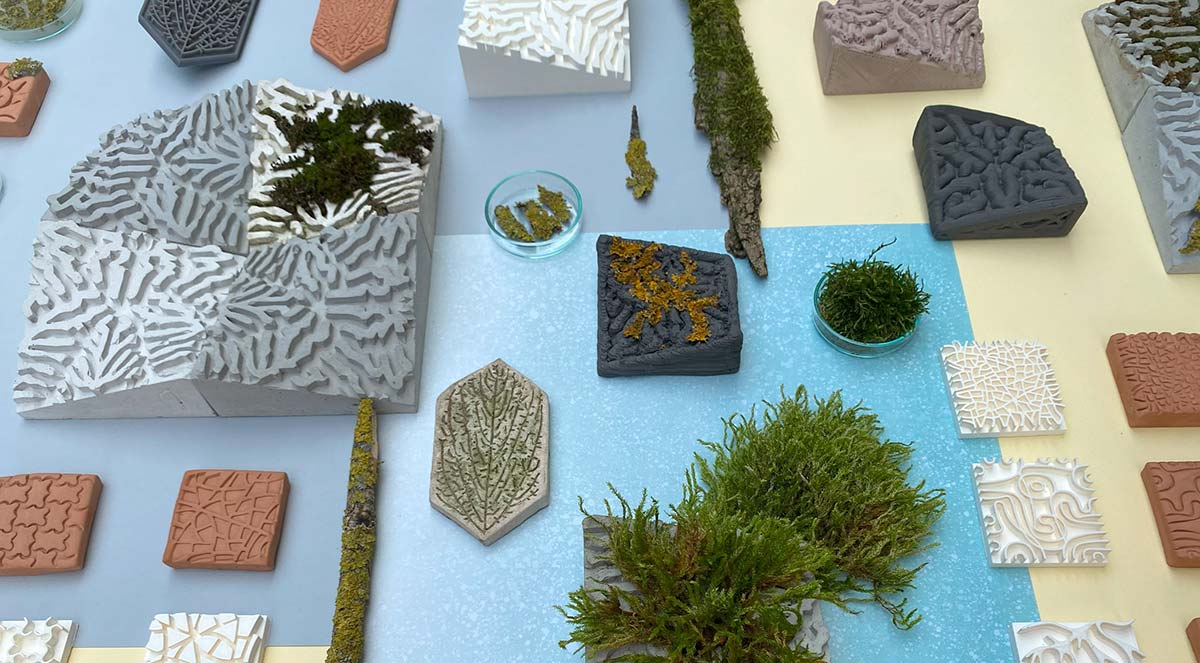
Materials Experience
Valentina Rognoli passionately fulfills her role as a researcher at the prestigious Polytechnic University of Milan, in the areas of teaching and applied exploration in Design materials. Her academic career extends from studying materials and their expressive-sensory impact. Recently, she has outlined a new field of study in collaboration with some colleagues, named “Materials Experience”, focused on the essential role that materials take on in the scenario of interactions between objects and individuals. Her research has spotlighted emerging areas in the materials experience, incorporating factors such as smart materials, imperfection, and traces, the identity of eco-friendly materials, and digital manufacturing technologies.

